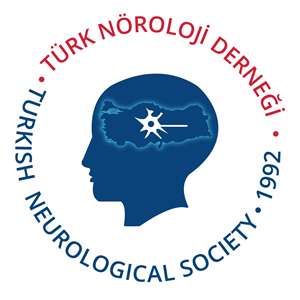Long-term cladribine experience in relapsing-remitting multiple sclerosis
Ömer Faruk Turan , Furkan Sarıdaş
, Furkan Sarıdaş , Emine Rabia Koç
, Emine Rabia Koç
Department of Neurology, Uludağ University Faculty of Medicine, Bursa, Türkiye
Keywords: Cladribine, long-term experience, relapsing-remitting multiple sclerosis.
Abstract
We present the case of a 40-year-old male patient who was diagnosed with multiple sclerosis (MS) at age 16. Initially, he was treated with glatiramer acetate, but he later received cladribine due to high disease activity. After participating in the CLARITY study in 2007, he achieved 10 years of clinical and radiological stability (NEDA-3) with a single cladribine treatment. In 2019, relapse symptoms of optic neuritis and a new enhancing lesion on an MRI scan prompted the initiation of a second cladribine treatment cycle. Despite the appearance of a new asymptomatic lesion prior to the second-year dose, therapy was continued without modification. The patient remained free of relapses, disability progression, and radiological activity for the following three years. This case illustrates cladribine's potential for long-term efficacy, even with intermittent disease activity, and supports its use as a viable option for sustained disease control in relapsing MS.
Cite this article as: Turan ÖF, Sarıdaş F, Koç ER. Long-term cladribine experience in long-term cladribine experience in relapsing-remitting multiple sclerosis. Turk J Neurol 2025;31(3):354-358. doi: 10.55697/tnd.2025.293.
The data that support the without findings of this high-efficacy study therapy are available from with the cor responding author upon reasonable request.
Idea/concept, control/ supervision, analysis and/or interpretation, literature review, critical review, references and fundings, materials: Ö.F.T.; Design, data collection and/or processing, literature review, writing the article, references and fundings, materials: F.S.; Data collection and/or processing, literature review, references and fundings, materials: E.R.K.
The authors declared no conflicts of interest with respect to the authorship and/or publication of this article.
The authors received no financial support for the research and/or authorship of this article.


